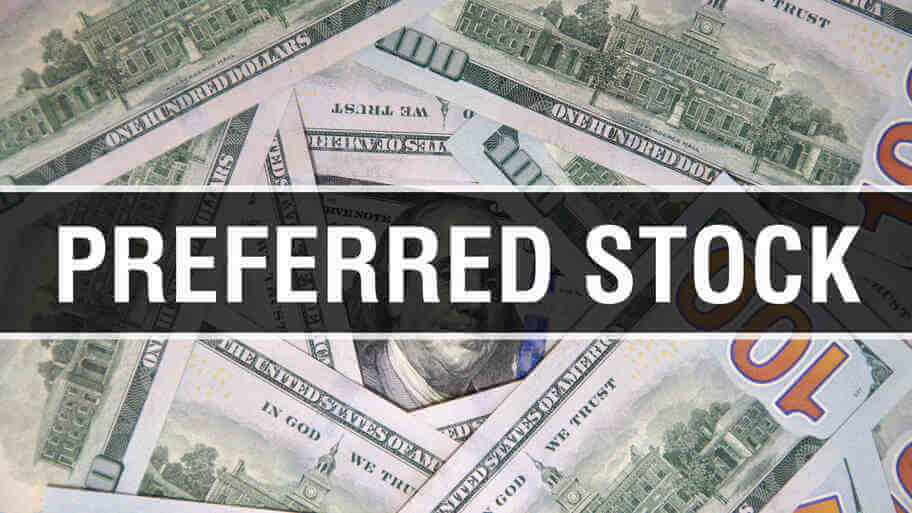When looking to invest in the stock market, there are two broad types of stocks you can pick from—common stock or preferred stock.
In this post, we will look closely at what preferred stocks are all about and the reasons why investing in them makes sense. Read on to learn all the important facts about preferred stock.
What Is Preferred Stock?
Preferred stocks aren’t so different from the common stocks which you purchase from a company. The major difference is that preferred stockholders enjoy added security and privileges common stockholders never have access to.
For example, in the event that a company folds, common stockholders will get their payment only after all preferred stockholders get their cut.
On top of that, if you own a preferred stock with a company, you will get your dividends in a timely manner, unlike common stockholders.
As such, preferred stock offers the holder better security and, thus, lower risk than common stockholders.
How Does Preferred Stock Work?
Preferred stock works in almost the same way as bonds do: their holders get paid fixed dividends at common time intervals. So, if you are looking for a fixed-income investment to put your money into, preferred stock is the place to look.
Common stock, however, doesn’t work that way.
Another way that common stocks differ from preferred stocks is that preferred stocks are heavily dependent on interest rates and so tend to fluctuate.
Moreover, preferred stocks are characterized by what is known as “par value.” These are units of the stock that can be redeemed and later purchased back after a certain time frame—typically around five years.
Lastly, in the event that accumulated dividends on preferred stock aren’t paid over a period of a year, it amounts to arrears. These arrears, technically, are known as dividends in arrears on cumulative preferred stock.
What to Know About Preferred Stock
If flexibility is at the top of your list of criteria when looking to pick a stock to invest in, preferred stock is your best bet. Due to this flexibility, preferred stock offers higher dividends than bonds.
And that’s not all; preferred stocks enjoy better longevity than bonds do. Or, as investment experts like to say, preferred stocks are perpetual.
What does that mean? Simply put, it means that preferred stocks can remain valid forever. And unless the company repurchases the stock, it remains outstanding forever.
Other Things You Should Know About Preferred Stock
1 . They can be easily converted to common stock. This means that if you own preferred stock, you can convert them to common stock at a stipulated price. But valuing convertible preferred stock should be done by an investment expert.
2 . Dividend payment can be delayed – or even skipped altogether – on preferred stock. This means that if a company is unable to pay dividends to its preferred stockholders, no legal action will be taken against them.
However, dividend payments can only be skipped on noncumulative preferred stocks. For their cumulative counterparts, dividend payments can only be delayed but never skipped.
Preferred Stock vs. Common Stock vs. Bonds
Bonds, preferred stock, and common stock are all investment vehicles that can have future contracts to secure your financial future. However, they are distinctly different, even though they may have lots of common ground.
To begin with, companies issue all these three financial instruments for the same reason: to raise money to run their business.
But due to the costly nature of common stock, many companies tend to shy away from it, opting for preferred stock instead.
Investors, on their own part, tend to favor preferred stock for a number of reasons, chief among them is that preferred stock yields a better return on investment, especially for beginners.
And though preferred stockholders tend to enjoy better steady income revenue, they are at more risk of losing their investment than those that invested in bonds.
Common Stock
The reason why it’s called common stock is that the holders of this stock are usually the last to receive their dividends once a company starts paying out.
Even worse, in the event of liquidation, common stockholders will be the last to get their money back – that is, if there’s anything at all left for them.
In the face of these drawbacks, what would make anyone want to invest in common stock? Simple. If a company remains profitable, common stockholders enjoy unlimited returns on their investments for almost forever. No cappings!
Preferred Stock
It’s called preferred stock for a reason: investors tend to prefer them over common stock. And investors prefer this type of stock because it enjoys preferential treatment from the company issuing it.
For example, when dividends are being paid out, preferred stockholders will get theirs before common stockholders.
But preferred stocks have a major drawback: a company can decide to skip dividends payout on it, and there’s nothing anyone can do. On top of that, the return on it is somewhat limited.
Bond
Of all the three investment instruments discussed so far, bonds enjoy the highest level of security and stability.
The reason is, before paying out dividends, the law stipulates that a company must first pay interest to bondholders.
Furthermore, in the event that the company folds, bondholders will be the first to get back their invested capital even before preferred and common shareholders are given a thought.
But due to the high level of security bondholders enjoy, their return on investment is always lower.
There are times when a conflict between shareholders and bondholders arises. Oftentimes, it happens when a company makes huge financial gains, and bondholders are left out.
This is because, more often than not, the contract between the bond issuer and bondholder stipulates that only shareholders can benefit from a corporate gamble that pays off.
How to Buy Preferred Stock
Although preferred stock can be bought on stock exchanges just like common stock, this isn’t the case most of the time. To buy this type of stock, you will need to check with banks or insurance companies.
It’s recommended that you consult with an investment expert before purchasing preferred stock. You don’t want to watch your money sink because of a bad investment decision.
Featured Image: Megapixl








